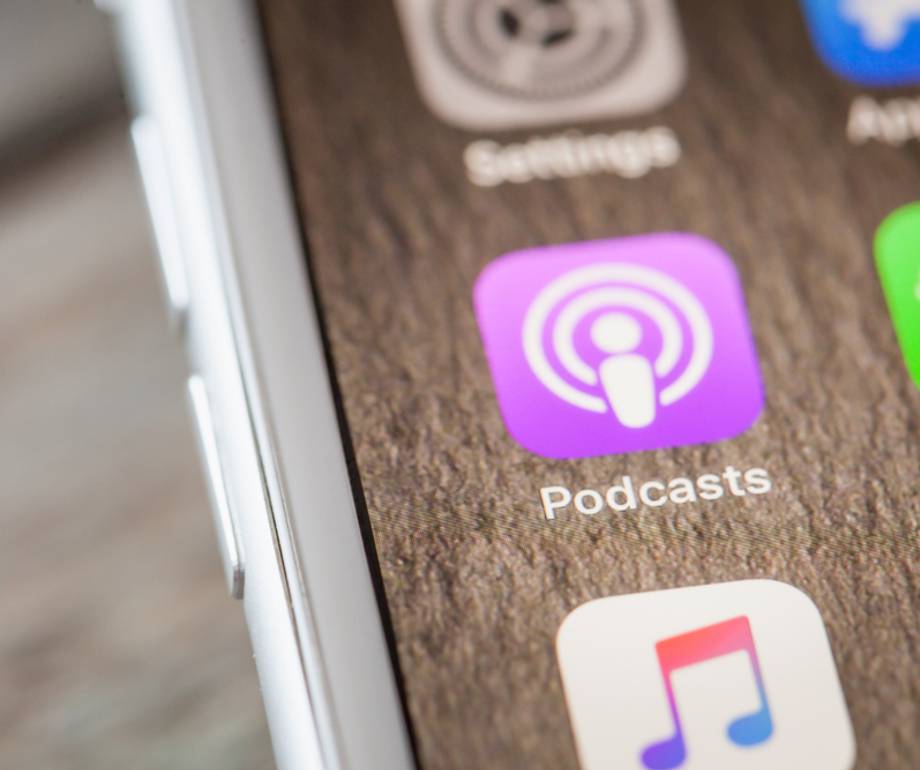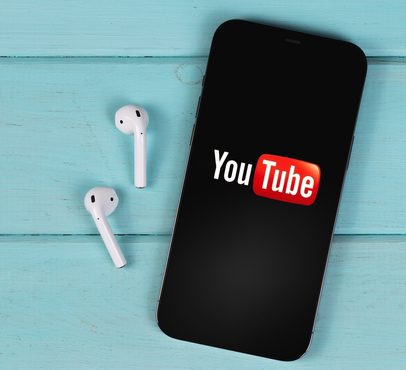Huge apologies to the great Simon and Garfunkel, but I absolutely hate the sound of silence. No, not the song (though I definitely prefer the ‘Disturbed’ cover version, go on, give it a listen!) — I hate the general concept.
Whatever I am doing, be it walking the dog, getting myself ready for the day, driving or cooking, I am always doing it to the background track of one of my favourite podcasts.
For all of these activities, I am generally not even looking at a screen (with the occasional exception of cooking, when I might be meticulously following a BBC Good Food recipe), and yet, it is still possible for savvy brands to reach me with some well-targeted paid media.
How?
Through the power of podcast and audio advertising.
What is podcast advertising?
Podcast advertising (also often referred to as audio advertising) is the delivery of ads via podcasts across a variety of platforms, some of the most popular including Spotify, Apple Podcasts and Google Podcasts.
The ads take on a variety of formats, from pre-recorded adverts created by the brand themselves, to ads read out by the hosts of the podcast you are engaging with. They are often short, snappy and, usually, memorable!
Why should you consider podcast advertising?
You can reach people who are ‘screenless’
Four-fifths of podcast consumption is on mobile, and most of the time people will be doing something else; cooking, driving, dog walking, pumping iron — just getting on with their lives, basically.
In this way, podcast advertising is rather unique: it’s a means to reach your target audience in screenless moments. Good news for promoting your brand’s message in a new, alternative way.
Your audience is huge — and diverse
It may also be a way to reach an untapped audience that you haven’t been able to connect with using traditional digital marketing methods. With an estimated 23 million podcast listeners in the UK in 2023 — a figure that’s growing every year by the tune of two million people — the potential reach is undeniable.
You can hone in on your audience
Podcast and audio advertising allows you to hone in on your specific target audience. People aged 26–35 are the biggest listeners in the UK, but with over six in 10 having listened to a podcast at some point, it’s a great way of reaching your target demographics, whatever they are.
For example, I’ve been listening to the ‘Parenting Hell’ podcast A LOT recently, partly because it’s very funny and partly as research for an upcoming addition to the Heseltine household. The majority of listeners to that podcast are likely to be either parents themselves, or soon-to-be parents.
If ‘parents’ are part of the key demographic you are aiming to target, an ad on Rob and Josh’s podcast is prime digital real estate. Not to mention the fact that the hosts read out the ad themselves, lending credibility and trustworthiness to your product.
Pampers are a brand that have been doing this to great effect recently, with the hosts highlighting their latest campaign for a new nappy feature that purports to halt ‘poo-namis’ in their tracks (see what I mean research. Did I know what a poo-nami was before? No. Do I wish I still didn’t know? Absolutely). The audience for this ad is as relevant as it gets, and this hyper relevance impacts the attention that listeners pay to the product.
People recall and pay attention to podcast ads
It’s a fact that podcast advertising commands the highest level of attention: 65% of listeners paid attention, compared to 39% for TV and 38% for radio.
Not only are listeners paying attention, they are also more likely to purchase from a brand they have heard on a podcast; 54% of listeners consider themselves 'somewhat' or 'much more' likely to consider a brand after hearing it being promoted on a podcast. Ker-ching...
How to get started with podcast advertising
So, we’ve convinced you and you’re now ready to dip your toe in and try podcast advertising for the first time. Where on earth do you start?
Figuring out your budgets
The first consideration, unfortunately, when it comes to deciding what types of podcasts you can target for your campaigns. If you have set your sights on specific premium podcasts, it is likely that you will require a minimum spend.
For Acast, a network that hosts a number of the world’s most popular podcasts, such as ‘Shagged Married Annoyed’ and Fearne Cotton’s ‘Happy Place’, in order to launch a campaign with the hosts reading your ads, the minimum campaign spend is £10,000. This is the same for Stackadapt, a programmatic platform that also offers audio advertising as a campaign type.
This budget may be too high for many advertisers, especially when testing a completely new platform. However both Spotify and Acast now offer a self-serve option, with a lower minimum campaign spend of £250: a much easier ‘yes’ for most marketing finance departments. For this price, you have the benefit of being able to set up the campaigns yourself, right down to uploading the audio, and you can track the campaign’s progress in real time.
Understanding the different targeting options
Again, sadly, you get what you pay for. Rather than selecting specific placements for your audio ads with hosts reading your ads, with these self-serve options, the targeting options are more interest-based — comparable to those we are used to using for display advertising.
With Spotify, you could target listeners who, for example, ‘listen to hobbies and craft podcasts’ or ‘kids and family podcasts’. These targeting options are more based on the user and their behaviour than the specific context in which they will hear your ad. Spotify have put together a useful list of all the podcast advertising targeting options available.
Acast offers similar interest- and audience-based targeting. But an additional string to their bow is ‘conversational targeting’. This gives advertisers the ability to target individual podcast episodes in which the hosts discuss or feature a subject that is relevant to your business. For example, say your business sells recipe boxes, Acast could serve your ads mid-roll in episodes in which the hosts discuss ‘cooking’, enhancing the contextual relevance.
If you have been lucky enough to be given the green light for testing a higher budget podcast campaign, this opens the door for being able to speak to Acast directly about organising a campaign in which the hosts read an endorsement for your brand or product.
These ads flow seamlessly into the podcast episode, and, as we have mentioned, having the host of your favourite podcast recommending a particular company lends it authenticity and trustworthiness. We often listen to these podcasts so often that we start to think of the hosts as a friend.
So, when Fearne Cotton tells me that Garnier is committed to sustainability and being cruelty free, it genuinely sticks in my mind the next time I am looking for a shampoo or face cream and influences my purchase decision. If Fearne is using it, it must be good!
This bigger budget also gets you access to an account executive who can provide insights into which podcasts would best suit your brand based on their detailed demographic data. They can also provide you with the listenership figures and put together a bespoke plan for your campaign.
Integrating with your wider digital strategy
Finally, there’s also the option of running your podcast advertising through your programmatic platform of choice such as Stackadapt, the platform we use here at Extreme.
A benefit of choosing to do this is the multi-channel impact that your campaigns can have by tying them into your overall digital strategy. For example, once you have served your audio ads to your target audience, you can then use native or display ads to retarget those listeners, further reinforcing your brand’s message and creating a seamless, multi-channel and multi-device experience.
Overall, there’s an audio advertising option that fits almost any budget or any skill level!
How to measure the effectiveness of your podcast advertising
Measuring the impact of a brand awareness-based campaign, across any channel, can sometimes be a daunting task. It’s simply not as tangible as sales or leads and this can put some marketing managers off even trying, so set are they on delivering measurable results to the ‘powers that be’ who control the pursestrings.
The important thing to do is define your success metrics early doors. What are you hoping or expecting to achieve from this activity?
Consider unique discount codes
Although it’s not foolproof, you can choose to use a discount code to track any sales or leads that have directly been influenced by your podcast ads. If you’re advertising on multiple shows, you could make each one specific to that podcast so you can take note of the most effective placements.
Directly influenced online sales are, of course, the outcome that most brands will be hoping for. However, because of the nature of podcast ads, they may be served to users when they are unable to hop straight onto your website and hit ‘buy now’ — so it’s possible that they will have forgotten your promotion by the time they are in a ‘purchase friendly’ setting.
Look out for the signs of a broader awareness boost
As with any awareness-based campaigns, it is important to consider the wider context. Better metrics to focus your attention on are any that indicate an increase in consideration for your brand; an uptick in searches for your brand, product name or an increase in traffic to your site may suggest that users are being influenced by your audio activity.
There are also a number of metrics that you will either be able to track real time, or will receive as part of a report from your audio advertising facilitator of choice. Impressions, listens and clicks through to your website directly from the ad are all valuable metrics for illustrating the reach and engagement rates of your podcast ads and should not be forgotten when reporting back on success!
Ready to augment your awareness with audio?
Podcast advertising represents an untapped well or opportunity for many brands, and yet it shouldn’t!
With the extensive listenership, ability to be hyper relevant with your targeting and different options available for every budget, podcast advertising is an obvious way to diversify your paid media strategy, taking your advertising to the next level.
Be heard as a brand
Contact our advertising expertsPost by

Lucie is our lead on all paid media activity, overseeing our talented paid media team and managing the strategy and implementation of all paid search campaigns across multiple platforms. Fully Google qualified and working directly at Google prior to joining Extreme, there's not much Lucie doesn't know about PPC!
Project



